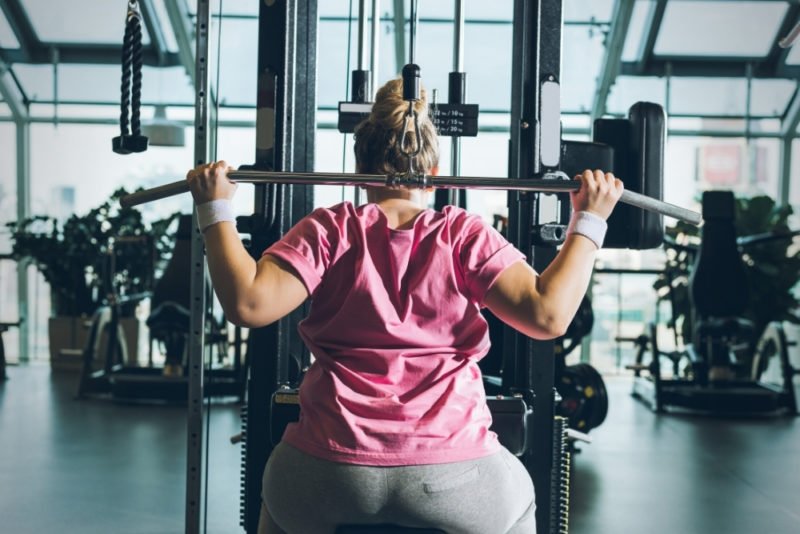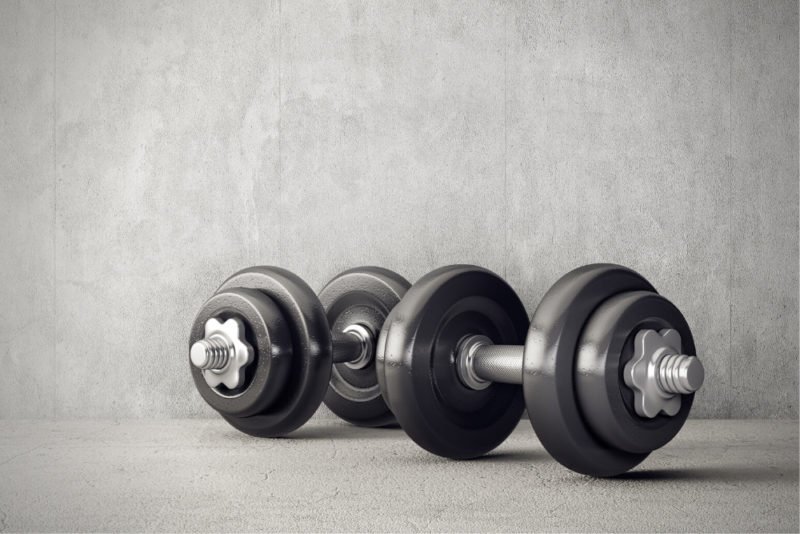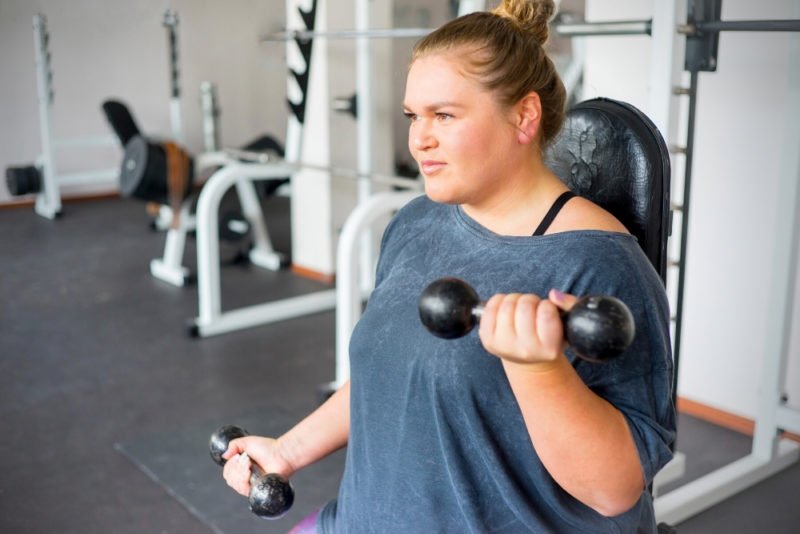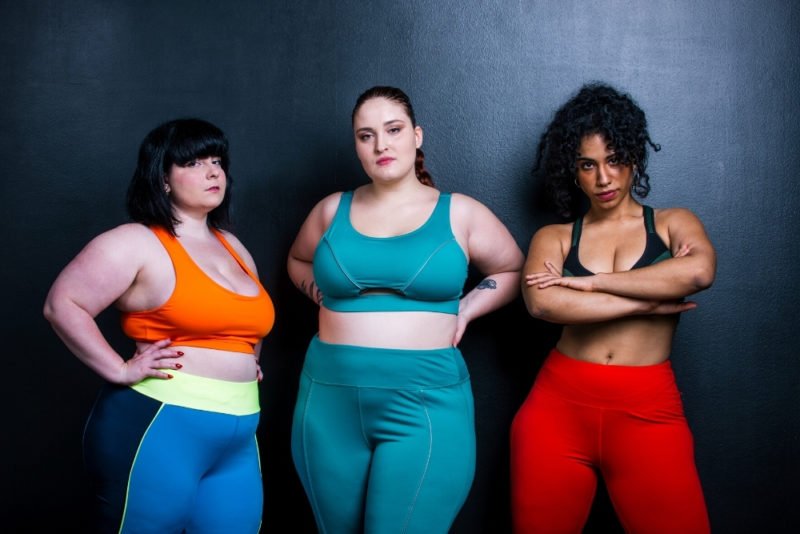
For my current column in The Seattle Times, I interviewed Brooklyn, NY certified personal trainer Morit Summers (@MoritSummers) about her new book, “Big & Bold: Strength Training for the Plus-Size Woman.” Here, I want to give a little of the origin story behind why I decided to feature Morit and her book in my column. I also want to provide other size-inclusive, body positive fitness and movement resources.
I had long been planning to write a blog post with these resources, but then two things happened. The first was, in a session with one of my clients, she mentioned another book, “Fitness for Every Body” by Meg Boggs (@meg.boggs), and how much she appreciated the photos of a body that resembled hers. As I talk about in my column, moving our bodies is good for every body, but when we only see representations of thin bodies, that sends damaging messages.
(Check out Meg’s interview on Episode #264 of the Food Psych podcast, talking about how to handle holiday diet talk and body comments, and healing from weight stigma.)
I knew that Morit had a book coming out (I had already preordered it), so I ordered Meg’s book. I started working out from it right away and enjoyed it, but, ultimately decided to use Morit’s book as a framework for my workouts. I’ll explain the relative merits of each book in a moment, but first, a little backstory.

My strength training history
I started weightlifting in high school because my boyfriend at the time was a bodybuilder wannabe. I wasn’t into it in the same way he was, but I had already been indoctrinated into diet culture, so I saw weightlifting as a way to lose weight and “shape” my body.
In college, I spent hours and hours studying body building books, especially books by female body builders who had mass appeal because they had muscles, sure, but they still looked “feminine.” Of course, the books included tips on how to eat that were, totally restrictive and disordered, even though I didn’t see it at the time. This was NOT size-inclusive fitness.
My weightlifting endeavors became less intense after college, ebbing and flowing based on where I lived, whether there was a gym near my home, and if I had gained weight and wanted to lose it again. But even though my efforts were very appearance- and size-focused, I liked lifting weights. I liked feeling strong, I liked creating my own detailed workouts…even if I did get too obsessive about it.
The last turn of that wheel was 15 years ago. I had broken my ankle, and my surgeon told me I would gain weight and lose fitness. It pissed me off and triggered what was my most obsessive diet-and-exercise phase. If I had been predisposed to an eating disorder, I have zero doubt that I would have developed one at this time.
The upside of that time was that I created my own at-home gym with a weight bench, free weights, kettlebells, medicine balls, and resistance bands — equipment I still own and use regularly. The downside was that I spent hours and hours devouring women’s fitness magazines and PDF e-books (eventually real books) from male personal trainers. All of these resources totally promoted disordered eating.

Moving back to balance
My obsession faded when I started grad school to become a dietitian and discovered Intuitive Eating and Health at Every Size. I still lifted weights, but it became more about being strong, less about trying to change my size or shape. However, the past few years I’ve felt like I’d fallen into a bit of a rut, and lifting weights felt less…interesting.
Enter Meg and Morit. Both of their books present excellent workouts. But one of the main reasons I’m singing the books’ — and the authors’ praises — is that they affirm that fitness is not dependent on weight and that physical activity is valuable in its own right. In other words, it’s not just a tool for weight loss. Here’s what I like about each book:
- Meg’s plan is three workouts per week, a chest day, a back day, and a legs day. The exact exercises vary each week, and she includes suggestions for easier or harder modifications. It’s very straightforward, very “plug and play.” Because you have a rest day between each workout, this may not be the plan for you if, like me, you travel on the weekends or do heavy gardening or home projects and am too wiped for a formal “workout.” I love her warmup routine (and continue to use it). The only required equipment is dumbbells (hand weights) and kettlebells.
- Morit’s book reminds me of the hardcore weightlifting books of my youth, only this one has a size-inclusive perspective. It’s about being powerful and strong! She provides lots of variations for different movements, as well as excellent advice for modifying by swapping one exercise for another or even creating your own workouts based on your strength goals or the equipment you have available. And…she provides excellent sample workouts, with each working the entire body, so if you can’t fit in three workouts (with rest days) into your schedule, you’re still covering all your body parts.

More body positive, size-inclusive fitness resources
These are some of my favorite size-inclusive fitness professionals who also represent what fitness can look like in larger bodies. If you’re on Instagram, I encourage following them in order to make your personal feed more body-affirming:
- Curvy Yoga (@CurvyYoga) is the brainchild of Portland, Oregon-based yoga instructor Anna Guest-Jelley. You can find instruction online — some free workouts plus paid memberships are available — or locate Curvy Yoga certified and Curvy-friendly classes at curvyyoga.com.
- Dianne Bondy (@DianneBondyYogaOfficial) is a Canada-based yoga instructor and author of the book “Yoga for Everybody” and co-author of “Yoga Where You Are.” You can find Dianne, and her online courses, at diannebondyyoga.com.
- Jessamyn Stanley (@MyNameIsJessamyn) is a North Carolina-based yoga instructor and author of the books “Every Body Yoga” and “Yoke: My Yoga of Self-Acceptance.” You can find her at jessamynstanley.com or sign up for online classes at theunderbelly.com.
- Latoya Shauntay Snell (@IAmLShauntay) is an NYC-based food and fitness blogger. You can find her at runningfatchef.com.
- Louise Green (@LouiseGreen_BigFitGirl) is a Canada-based certified personal trainer and author of “Big Fit Girl: Embrace the Body You Have” and “Fitness for Everybody.” She is also the creator of the Big Fit Girl fitness app for iPhone and Android and writes the column “Big Fit Girl” for SELF. You can find her at bigfitgirl.com.
- Meg Boggs’ website is here.
- Morit Summers has a personal training website and you can get more inspiration from the website for the gym she co-owns, Form Fitness.
- Joyn (@LetsJoyn) offers free online classes that promote movement for everybody. As they put it, “joyn is the leading platform for body-neutral movement. No judgment, no diet talk, no BS, no cost.” Their mission is to answer the question, “How can I celebrate my body in the most joyful way?” Indeed, I learned about joyn from one of my clients, who told me how much she enjoyed the classes. Check it out at joyn.co.
This post contains Amazon Affiliate links. As an Amazon Associate I earn from qualifying purchases.
Carrie Dennett, MPH, RDN, is a Pacific Northwest-based registered dietitian nutritionist, journalist, intuitive eating counselor, author, and speaker. Her superpowers include busting nutrition myths and empowering women and men to feel better in their bodies and make food choices that support pleasure, nutrition and health. This post is for informational purposes only and does not constitute individualized nutrition or medical advice.
Seeking 1-on-1 nutrition counseling? Learn more about her Food & Body, IBS management, and nutrition counseling programs, and book an intro call to see if the program is a good fit, and if we’re a good fit!
Want exclusive content on nutrition, health, diet culture and more, plus critiques of nutrition and health journalism? Subscribe to my Food Noise newsletter! 📣
 Print This Post
Print This Post






